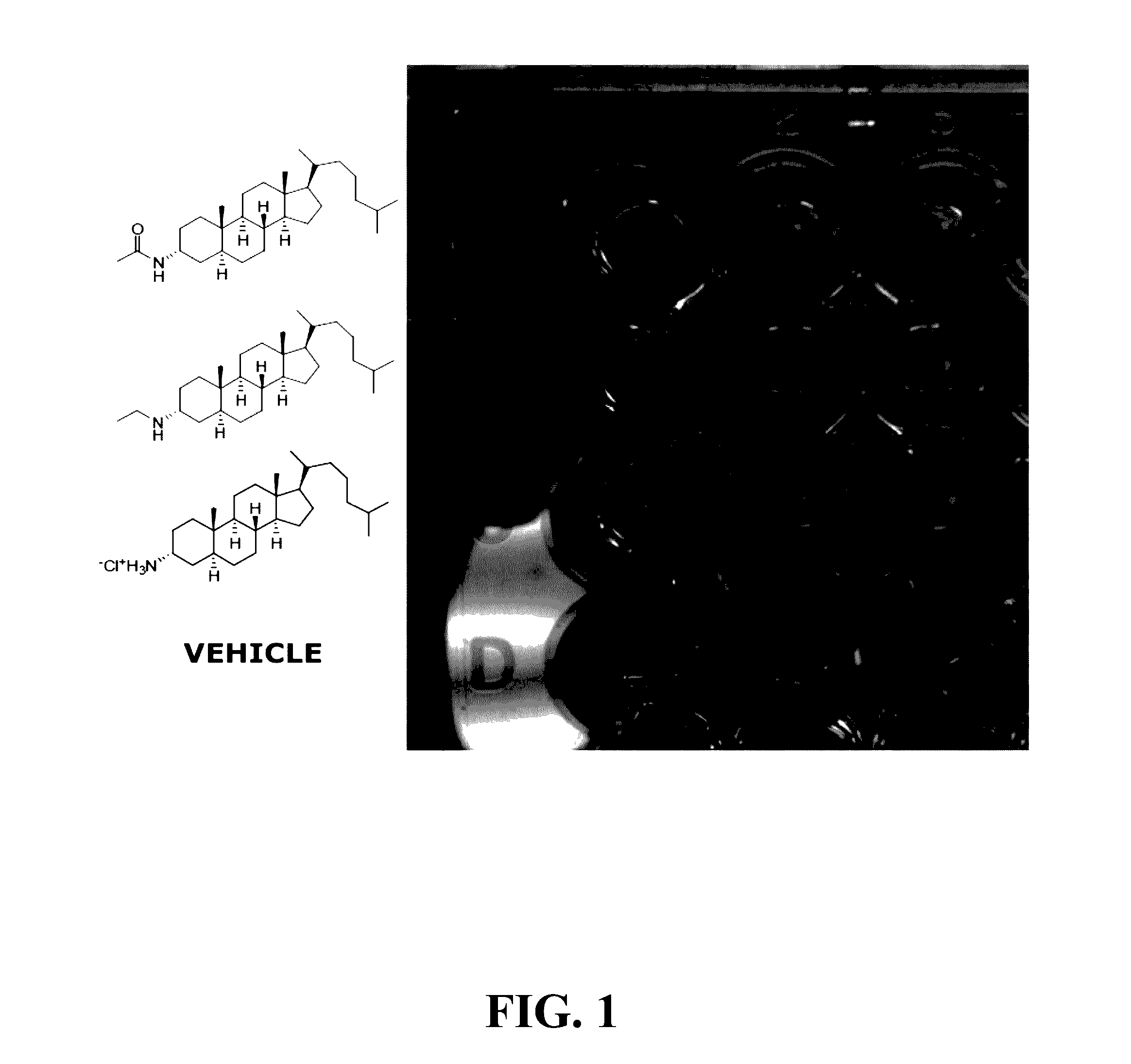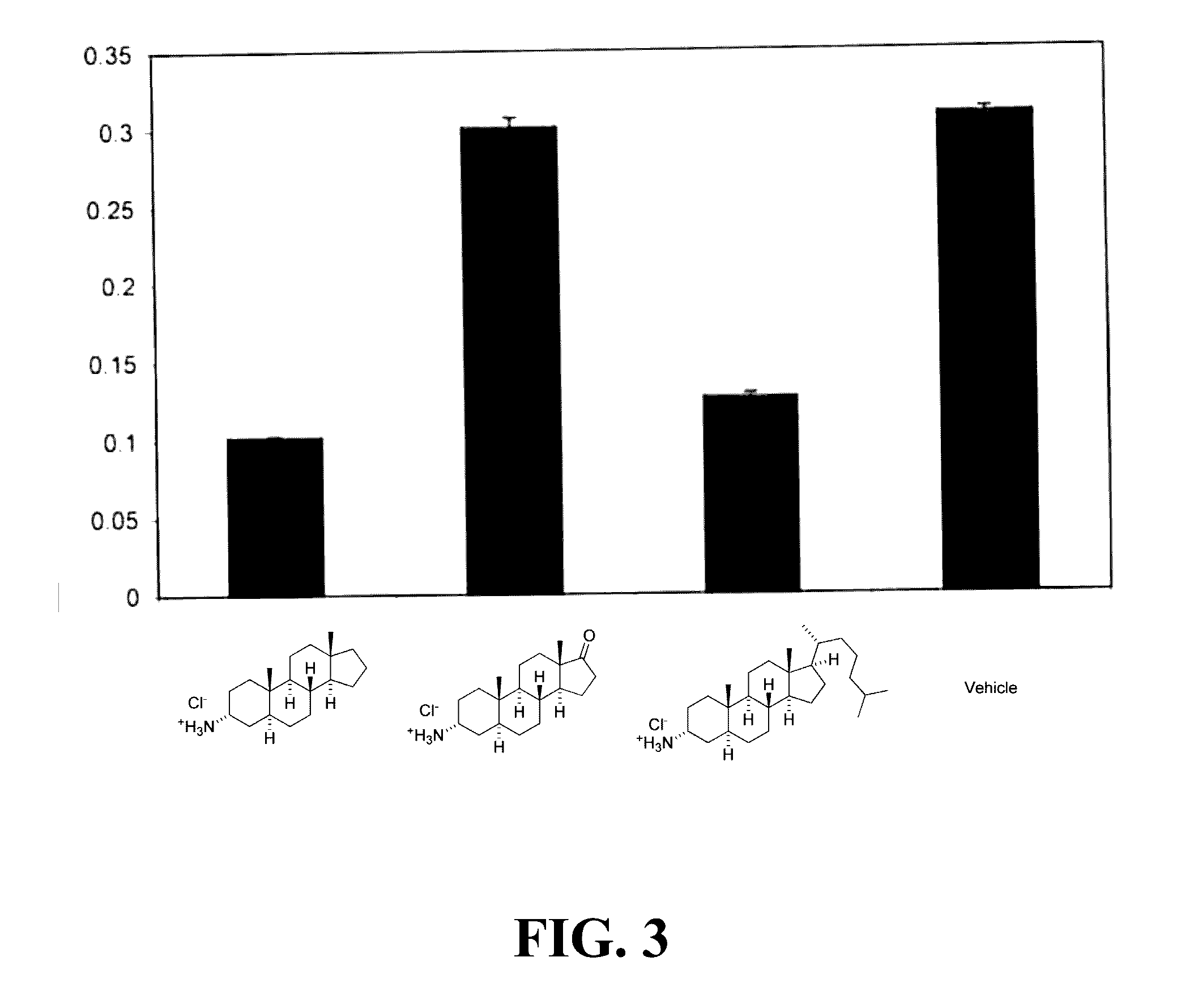Ship inhibitors and uses thereof
a technology of inhibitors and small molecules, applied in the direction of organic chemistry, chemical apparatus and processes, drug compositions, etc., can solve the problem that the rational design approach to develop ship1 inhibitors is not feasible, and achieve the effect of increasing the production of blood cell components
- Summary
- Abstract
- Description
- Claims
- Application Information
AI Technical Summary
Benefits of technology
Problems solved by technology
Method used
Image
Examples
example 1
Synthesis of 3α-Acetamido-5α-Cholestane
[0127]The 3α-acetamido-5α-cholestane of the present invention can be made using the following synthetic scheme:
example 2
Experimental Data Relating to 3α-Acetamido-5α-Cholestane
[0128]
[0129]3α-Acetamido-5α-cholestane. The α-amine (0.29 g, 0.75 mmol) was dissolved THF (2.21 mL) in a round bottom flask. Et3N (0.12 mL, 0.90 mmol) was added dropwise and the resulting solution was cooled at 0° C. Acetyl chloride (0.06 mL, 0.83 mmol) was added dropwise into the cooled solution which resulted on the formation of white precipitate. The milky white solution was stirred continuously for 15 min at 0° C. before allowing the reaction mixture to warm up to room temperature. THF (5 mL) was added and the diluted solution was washed with HCl (10 mL, 1 M), brine solution (10 mL), and H2O (10 mL). The organic layer was collected, dried over Na2SO4, and concentrated under reduced pressure. Recrystallization of the solid residue using EtOH afforded amide (0.22 g, 65%) as off white solid.
[0130]IR (KBr): 3265, 2931, 2864, 2848, 1667, 1337 cm−1. m.p.=215-216° C. 1H NMR (300 MHz, CDCl3): δ 5.71 (broad, 1H), 4.13 (broad, 1H), 1...
example 3
Synthesis of the β-Amine Compound
[0131]The β-amine compound of the present invention can be made using the following synthetic scheme:
PUM
 Login to View More
Login to View More Abstract
Description
Claims
Application Information
 Login to View More
Login to View More - R&D
- Intellectual Property
- Life Sciences
- Materials
- Tech Scout
- Unparalleled Data Quality
- Higher Quality Content
- 60% Fewer Hallucinations
Browse by: Latest US Patents, China's latest patents, Technical Efficacy Thesaurus, Application Domain, Technology Topic, Popular Technical Reports.
© 2025 PatSnap. All rights reserved.Legal|Privacy policy|Modern Slavery Act Transparency Statement|Sitemap|About US| Contact US: help@patsnap.com



